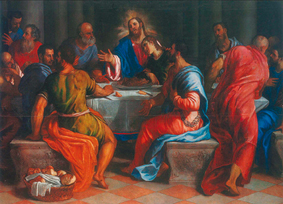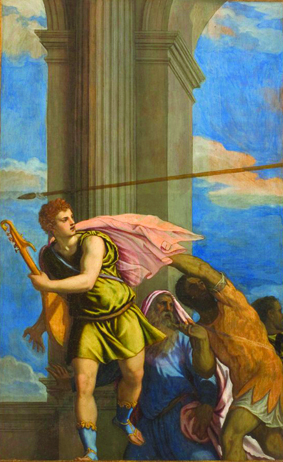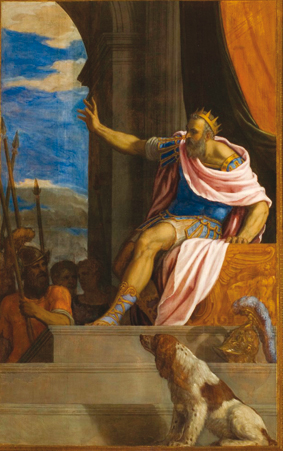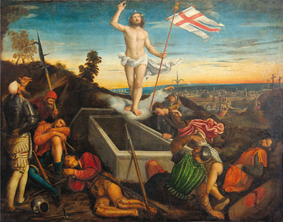SEARCH EVENT
Sezione "Ultima Cena"
Sezione "Ultima Cena"

La provenienza di quest’importante tela datata 1556 proviene dal refettorio del convento di S.Spirito in Isola, l’autore Giuseppe Porta detto Salviati giovane allievo del maestro Francesco Salviati della scuola Tosco-Romana tipicamente manierista, avendo già lavorato per la famiglia Grimani noti patrizi Veneziani, riceve la commissione di completare l’arredo artistico della Chiesa e convento da parte dei Canonici Regolari di S.Spirito. Nella tela si possono ammirare due incredibili unicità la prima: nel volto del Cristo, guardando a destra di Gesù all’altezza dell’Aureola si può notare un secondo volto rivolto verso l’alto, questo è un chiaro riferimento alla doppia natura di Gesù Divina ed Umana che presente nello specifico momento dell’istituzione dell’Eucarestia. La seconda: è la presenza di Giuda l’unico di spalle vestito di rosso intento a scappare dopo l’annuncio da parte di Gesù che qualcuno quella notte lo tradirà. I volti dei personaggi presenti sono idealizzati eccetto due che sono dei ritratti il primo è del pittore stesso il giovane vestito di blu il secondo invece posto alle spalle del pittore è stato identificato come il celebre poeta e scrittore morto nel 1556 Pietro Arretino amico dei Canonici Regolari di S.Spirito.
_______________________________
The provenance of this important canvas dated 1556 comes from the refectory of the convent of S.Spirito in Isola. The author, Giuseppe Porta, known as Salviati, a young pupil of the master Francesco Salviati of the typically mannerist Tuscan-Roman school, having already worked for the Grimani family, well-known Venetian patricians, received the commission to complete the artistic decoration of the church and convent from the Canons Regular of S.Spirito. In the canvas we can admire two incredible uniquenesses the first: in the face of Christ, looking to the right of Jesus at the height of the aureole we can see a second face turned upwards, this is a clear reference to the double nature of Jesus Divine and Human present at the specific moment of the institution of the Eucharist. Secondly, there is the presence of Judas the one on his back dressed in red intent on running away after Jesus’ announcement that someone will betray him that night. The faces of the characters present are idealised except for two that are portraits: the first is of the painter himself, the young man dressed in blue; the second, placed behind the painter, has been identified as the famous poet and writer who died in 1556, Pietro Arretino, a friend of the Canons Regular of S. Spirito.




